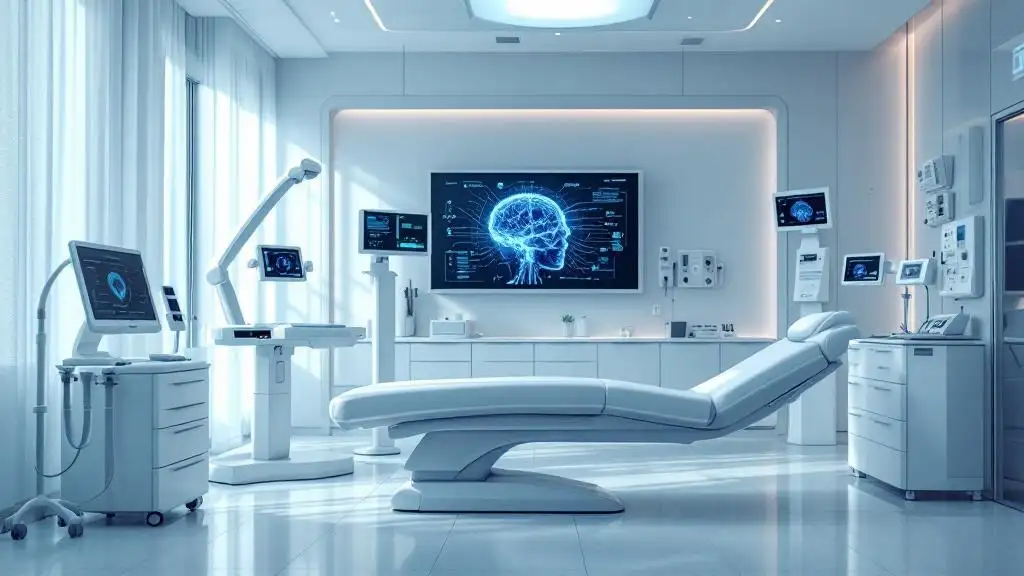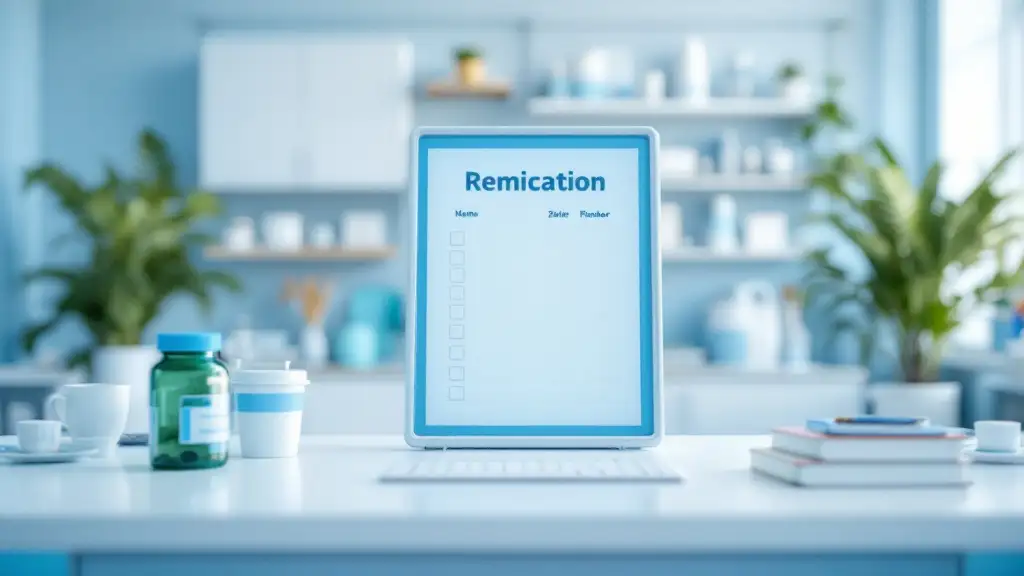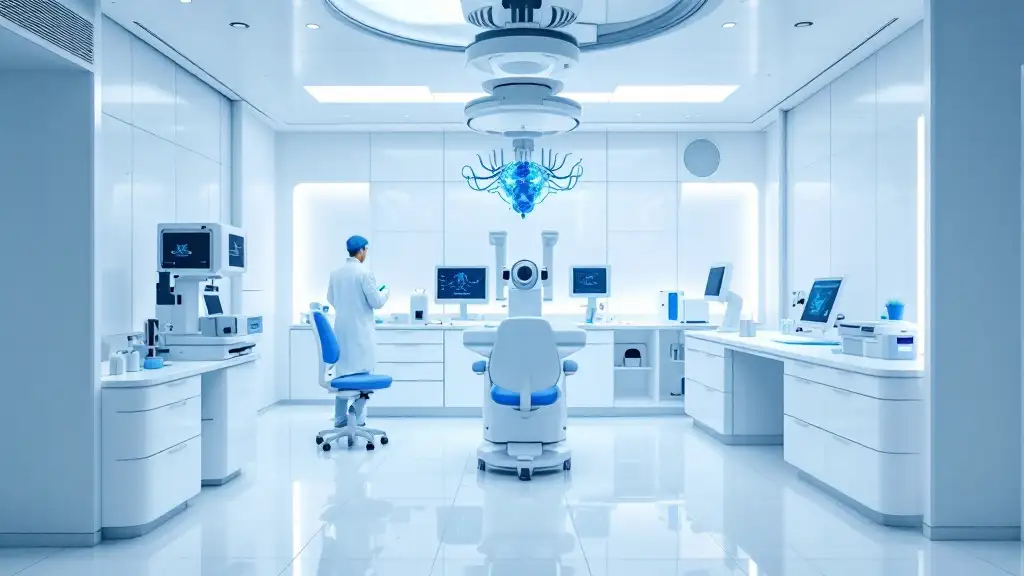Understanding the Importance of Early Detection
As the global population ages, the prevalence of age-related cognitive impairment, including conditions like mild cognitive impairment (MCI) and dementia, is rising sharply. With estimates projecting that nearly 14 million Americans will be affected by Alzheimer's disease within the next four decades, early detection becomes essential. Detecting cognitive decline in its initial phases not only enables timely interventions but also supports individuals and families in planning for future care needs. From traditional screening tools to cutting-edge technologies such as AI and passive assessments, numerous approaches are continually evolving to improve early identification and management of cognitive impairment.
Age-Related Cognitive Decline: When and How It Differs from Disease
Cognitive changes associated with aging usually begin around age 60, often presenting as slow, subtle declines in processing speed, working memory, and executive functions. These changes tend not to interfere significantly with daily activities and are considered part of normal aging. Notably, skills like vocabulary and general knowledge remain mostly intact.
The structural brain changes accompanying normal aging include synaptic loss, reduction in overall brain volume—especially in the prefrontal and temporal regions—and a decline in white matter integrity. These physical alterations are responsible for the mild cognitive shifts observed.
In contrast, pathological decline, such as in Alzheimer’s disease and other neurodegenerative disorders, progresses more rapidly and deeply impacts brain tissue. It features hallmark features like amyloid plaques, neurofibrillary tangles, and significant neuronal death, particularly in critical areas such as the hippocampus and parietal lobes.
Differentiating between normal aging and disease involves comprehensive cognitive assessments, biomarkers, and evaluation of functional impacts. Typically, normal aging does not impair an individual’s ability to live independently, whereas faster or more severe declines, especially with difficulties in everyday tasks, are indicative of underlying pathology.
Understanding these distinctions is vital for early diagnosis and timely intervention, which can ultimately improve outcomes and delay the progression of neurodegenerative diseases.
| Aspect | Normal Aging | Pathological Decline | Biomarkers & Brain Changes |
|---|---|---|---|
| Typical age of onset | After age 60 | Variable, often earlier or progressive | Amyloid plaques, tau tangles, neuronal loss |
| Rate of cognitive decline | Gradual, subtle | Accelerated, more pronounced | Brain volume reduction, specific regional atrophy |
| Impact on independence | Usually preserved | Often impairs daily functioning | Elevated neurodegeneration biomarkers |
| Brain regions affected | Prefrontal, temporal | Hippocampus, parietal lobes | Increase in amyloid, tau proteins detected via biomarkers |
This understanding facilitates targeted monitoring and early intervention strategies aimed at maintaining cognitive health as the population ages.
Early Signs and Symptoms: Recognizing the Subtle and the Concerning

What are the early signs and symptoms of cognitive decline, and how can they be distinguished from normal aging?
Early stages of cognitive decline often manifest as mild memory lapses, such as forgetting recent conversations, misplacing objects more frequently, or having trouble recalling familiar words. People may also begin to experience difficulties with planning or problem-solving, such as trouble following a recipe or organizing their finances.
While normal aging can involve occasional forgetfulness, the symptoms of early cognitive decline tend to be more persistent, noticeable, and impactful on daily life. For example, an individual might frequently get lost in familiar areas, ask the same questions repeatedly, or struggle with tasks they previously performed automatically.
Distinguishing normal aging from actual decline involves observing the pattern and severity of symptoms. Normal aging doesn’t typically interfere with independence or the ability to carry out routine tasks. In contrast, early cognitive impairment may cause challenges in performing instrumental activities of daily living (IADLs), like managing medications, handling finances, or preparing meals.
Healthcare professionals use comprehensive assessments, including neuropsychological testing, brain imaging, and detailed history-taking, to accurately differentiate between aging-related changes and signs of conditions like mild cognitive impairment (MCI) or early dementia.
Recognizing these signs early is crucial because it allows for timely interventions that may slow progression and support better outcomes.
More information
Understanding the early manifestations of cognitive decline can help individuals and families seek early evaluation and care, improving long-term management of potential neurodegenerative diseases.
Warning Signs of Dementia: When to Seek Help

What are some warning signs of dementia to be aware of?
Recognizing early signs of dementia can lead to timely intervention and better management outcomes. Main indicators include memory loss that impacts daily life, such as forgetting recent events, repeating questions, or losing track of appointments.
Individuals often struggle with familiar tasks, like cooking a meal, managing bills, or following a recipe, which they previously handled easily.
Confusion about time or place is common; people might forget where they are or what day it is.
Behavioral and personality changes are also significant. These can include increased suspicion, depression, irritability, or withdrawal from social activities.
Language difficulties are typical, such as trouble finding the right words, or repeating phrases. Visual-spatial problems, like difficulty judging distances or reading, may also occur.
Poor judgment and misplacing objects in unusual places can lead to frustration or accusations of theft.
Recognizing these early signs is crucial. Consulting a healthcare professional can help confirm a diagnosis and initiate appropriate support and treatments to slow progression or improve quality of life.
Tools and Approaches for Early Diagnosis and Risk Assessment

What methods and tools are used for early diagnosis and risk assessment of cognitive impairment?
Early diagnosis of cognitive decline often combines traditional screening tests with advanced biomedical tools. Standard cognitive assessments such as the Mini-Mental State Examination (MMSE) and Montreal Cognitive Assessment (MoCA) are widely used but have limitations, including high false-positive rates and reduced accuracy across diverse populations.
To enhance detection, researchers are developing and utilizing biomarkers that signal underlying Alzheimer’s pathology. Blood-based biomarkers, such as plasma amyloid-β ratios (Aβ42/40) and phosphorylated tau (p-tau181, p-tau231, p-tau217), are promising because they can be obtained via simple blood tests. These biomarkers can accurately predict the presence of amyloid plaques and neurofibrillary tangles before clinical symptoms emerge.
Imaging techniques like magnetic resonance imaging (MRI), positron emission tomography (PET), and computed tomography (CT) are also instrumental by revealing structural and metabolic changes in the brain. Although effective, these methods are often costly and less accessible, limiting their use in routine primary care.
Emerging digital and passive assessment technologies are transforming early detection. Smartphone apps and online platforms facilitate cognitive testing through gamified tasks, enabling frequent and remote assessments. Wearable devices and sensor technologies monitor gait, speech, and other motor patterns, which may indicate early cognitive impairment.
Furthermore, machine learning and artificial intelligence models analyze large, multimodal datasets to enhance predictive accuracy. These models employ algorithms like support vector machines (SVM), deep learning, and multimodal data integration to identify individuals at risk with sensitivities exceeding 90%. They can analyze neuroimaging, gait dynamics, genetic information, and behavioral patterns, often predicting decline years before symptoms become noticeable.
Overall, a multimodal approach involving clinical assessments, blood biomarkers, neuroimaging, and innovative digital tools provides a comprehensive framework for early detection. This integrated strategy aims to identify at-risk individuals as early as possible, enabling timely interventions and improving long-term outcomes.
Screening Procedures for Early Detection of Cognitive Impairment
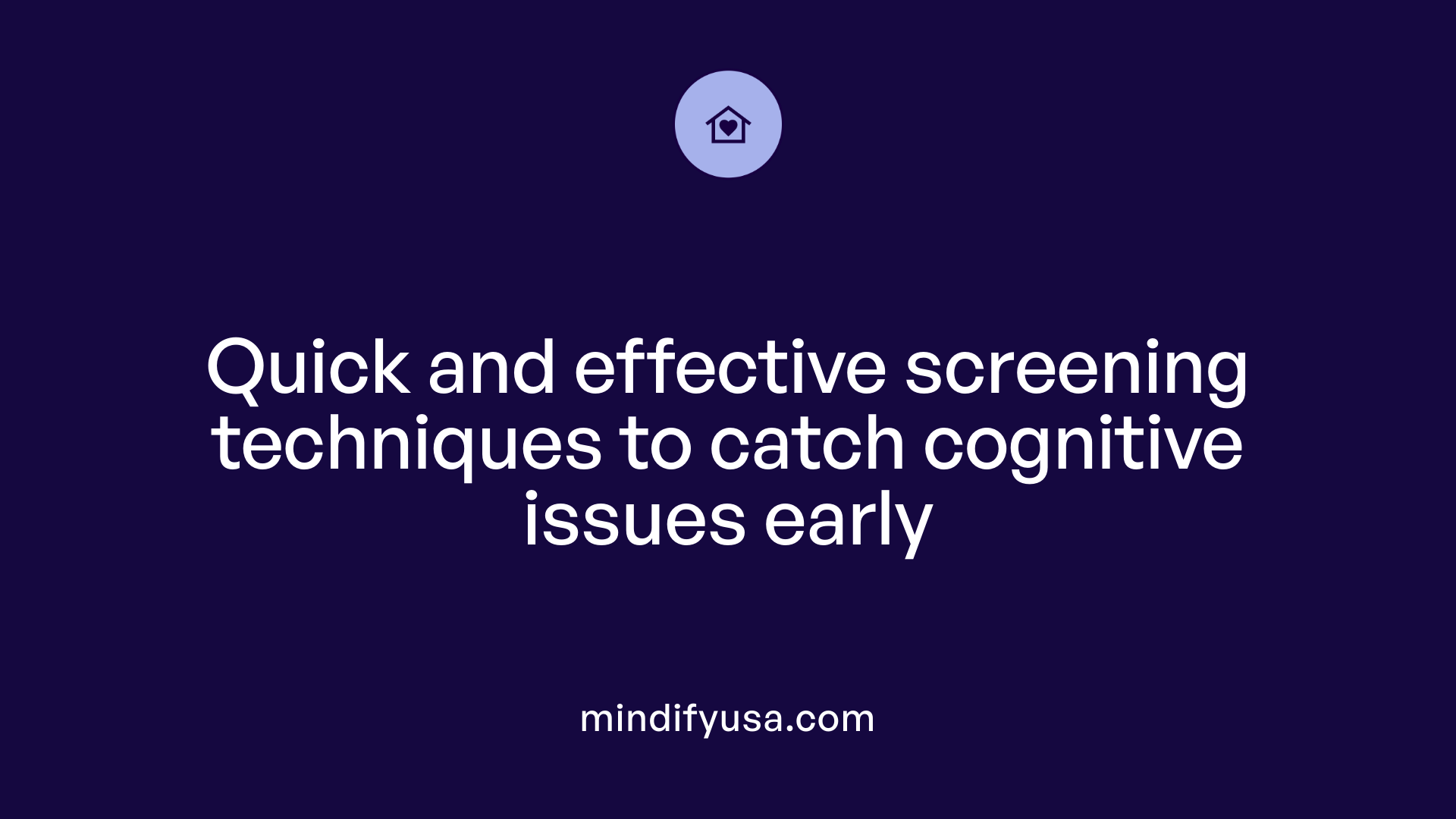
What screening procedures and tests are commonly used for early detection of conditions like mild cognitive impairment (MCI) and dementia?
Early detection of cognitive decline relies on a variety of screening tools and procedures designed to identify subtle signs of impairment before more severe symptoms develop. Traditional brief cognitive tests, such as the Mini-Mental State Examination (MMSE) and the Montreal Cognitive Assessment (MoCA), are widely used in clinical settings. These tests evaluate various cognitive domains, including memory, attention, language, and visuospatial skills, providing a quick snapshot of cognitive health.
In addition to these established assessments, newer instruments like the Quick Mild Cognitive Impairment (Qmci) screen and the Qmci-Gr have been developed to improve sensitivity and specificity. These tools can better distinguish between normal aging, MCI, and dementia. The Qmci-Gr, for instance, often outperforms traditional screens in differentiating MCI from early dementia.
Primary care plays a crucial role in early detection by utilizing rapid, validated tests such as the Mini-Cog, Memory Impairment Screen (MIS), and the AD8 Dementia Screening Interview. These assessments are often complemented by informal observations of daily functioning, communication patterns, and behavioral changes.
When initial screening suggests possible cognitive issues, further diagnostic steps may include comprehensive neuropsychological testing, blood-based biomarker evaluations like amyloid and tau protein analysis, and advanced imaging techniques such as retinal scans or brain MRI. This layered approach helps confirm early stages of impairment and guides subsequent management strategies.
In summary, a combination of quick, validated screening tools, detailed assessments when indicated, and emerging biomarker and imaging technologies comprise the current framework for early detection of cognitive impairment in primary care and specialized settings.
More information
- Search query: early cognitive impairment screening tests
This approach aims to identify individuals at risk as early as possible, enabling prompt intervention to slow progression and improve quality of life.
Innovative Technologies and Their Role in Early Detection
How do emerging technologies like AI, virtual reality, gait analysis, and passive assessments improve early detection of cognitive impairment?
Emerging tools in healthcare have revolutionized how we detect cognitive decline early on. They offer non-invasive, scalable options that can be used in clinics or patients’ homes, making screening more accessible and efficient.
Biomarker-based methods such as blood tests for amyloid (Aβ), tau, and phosphorylated tau (p-tau) provide insight into the underlying pathology of Alzheimer’s disease. For example, tests like PrecivityAD show promise in detecting these markers with high accuracy, allowing for earlier diagnosis.
Neuroimaging advances, including MRI, PET scans, and EEG, are powerful in identifying structural and functional brain changes linked to early cognitive decline. EEG, especially with portable devices, can detect neural activity alterations associated with MCI and dementia.
Passive behavioral monitoring through smartphones, wearables, and smart home sensors captures subtle changes in movement, speech, and daily routines. These data can reveal early signs like slowed gait, decreased activity, or speech irregularities before noticeable symptoms emerge.
Virtual reality (VR) environments enable simulated everyday activities, assessing functional skills and decision-making in a controlled yet realistic setting. Gait analysis during these simulations examines walking patterns—like stride length and velocity—that are sensitive indicators of early cognitive changes.
Artificial Intelligence (AI) integrates data from biomarkers, imaging, behavioral metrics, and passive sensors. Machine learning algorithms enhance diagnostic precision by identifying complex patterns and predicting who may develop impairments.
Collectively, these innovations support a multi-dimensional approach, enabling earlier, more accurate detection of cognitive issues than ever before. They facilitate timely intervention, personalized care, and broader screening that extends beyond traditional, resource-intensive methods.
The Role of Primary Care and Healthcare Systems in Early Detection
What role do primary care and healthcare providers play in early detection efforts for cognitive decline?
Primary care and healthcare professionals are essential in the early identification of cognitive decline, often serving as the first line of detection. During routine health visits, providers conduct screening assessments even if there are no overt concerns from patients or their families.
These assessments include comprehensive histories, brief cognitive tests such as the Montreal Cognitive Assessment (MoCA), and evaluations across different cognitive functions. Such proactive screening helps uncover subtle signs of mild cognitive impairment (MCI) before symptoms become more pronounced.
Incidental findings from these evaluations often lead to timely referrals to specialists like neurology or memory clinics, facilitating early diagnosis and intervention. The use of advanced risk assessment tools, such as the Brief Dementia Screening Indicator (BDSI) and predictive models utilizing machine learning, further enhances accuracy.
Healthcare systems increasingly incorporate digital tools, including mobile apps and passive monitoring technologies, which aid in ongoing assessment and support. These innovations allow for more frequent, personalized testing, often in home settings.
Addressing health disparities remains critical; ensuring equitable access to screening and specialist care is fundamental to broad early detection efforts. Policies aimed at standardizing cognitive assessments during wellness visits, expanding reimbursement incentives, and integrating multidisciplinary approaches strengthen early detection and improve long-term outcomes.
In summary, primary care settings serve as pivotal points for early detection by combining traditional assessments with technological advances, enabling timely intervention that can slow disease progression and enhance quality of life for older adults.
Why Early Detection Matters: Intervention and Management
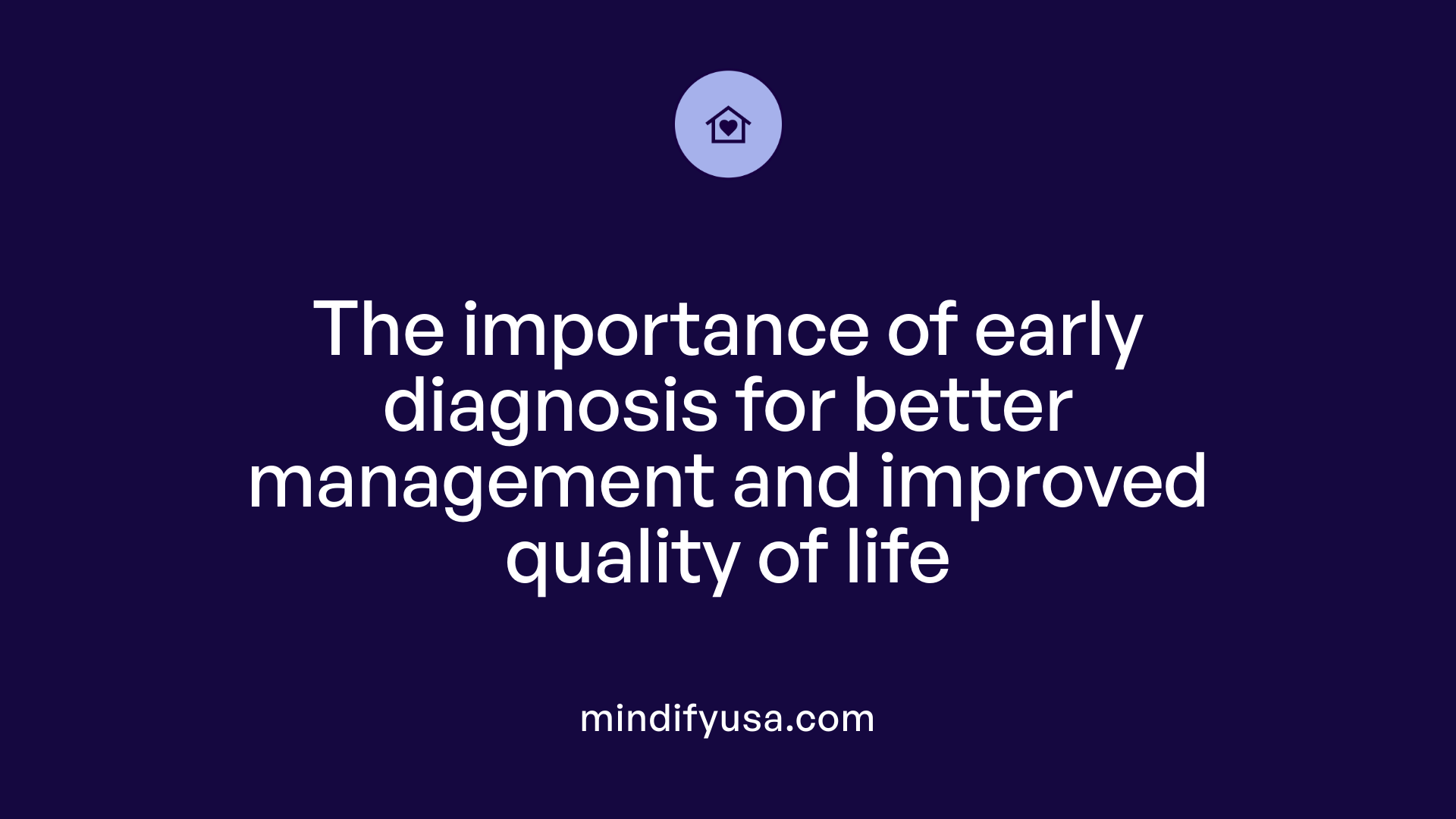
Why is early detection of cognitive decline important for intervention and management?
Detecting cognitive decline at an early stage is essential for several reasons. First, it makes it possible to introduce interventions that can slow the progression of diseases like Alzheimer’s. Early diagnosis allows healthcare providers to develop personalized treatment plans tailored to individual needs, incorporating medication, lifestyle changes, and cognitive training.
Furthermore, early detection gives patients and their families the opportunity to plan for future care, including legal and financial arrangements, and to seek support services. This proactive approach can reduce stress and improve emotional well-being.
Timely identification of cognitive issues also helps prevent secondary complications, such as depression or physical health decline. It supports better long-term outcomes by enabling meaningful interventions before functional independence is severely impacted.
In addition, routine screenings and increased public awareness encourage individuals to seek help sooner, leading to earlier management of symptoms. This not only enhances quality of life but can also delay the need for more intensive and costly care later on.
Early diagnosis and intervention are therefore crucial components in managing cognitive decline, ultimately resulting in better health, psychological, and financial outcomes for patients and their families.
Moving Forward with Early Detection
As research advances in biomarkers, digital health, and AI, integrating these innovative tools into primary care and community settings becomes increasingly feasible and essential. Overcoming challenges like cost, accessibility, and health disparities will be critical in ensuring equitable early detection efforts. Early diagnosis offers the best hope for effective interventions, personalized care, and improved quality of life, making it a top priority for healthcare systems worldwide. Continued policy development, provider education, and public awareness campaigns are vital to maximize these efforts and safeguard brain health across the lifespan.
References
- New opportunities for the early detection and treatment of cognitive ...
- 10 Early Signs and Symptoms of Alzheimer's & Dementia | alz.org
- Improving Early Detection of Cognitive Impairment in Older Adults in ...
- Cognitive Decline and Dementia: Early Detection and Intervention in ...
- New Research Lays Groundwork for Early Detection of Alzheimer's ...
- Developments in scalable strategies for detecting early markers of ...
- Early Detection and Treatment of Age-Related Cognitive Decline





















